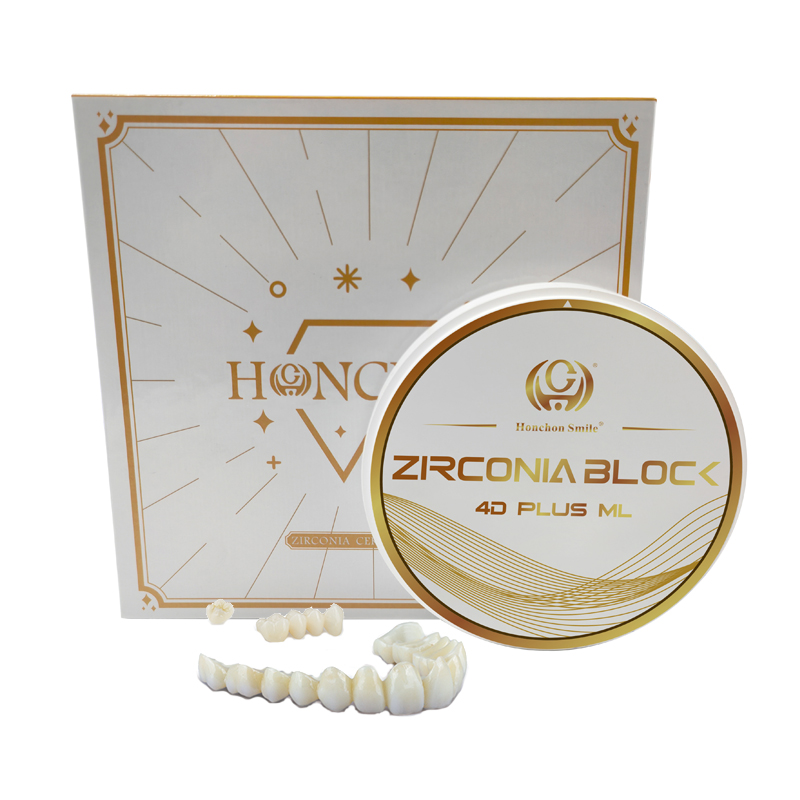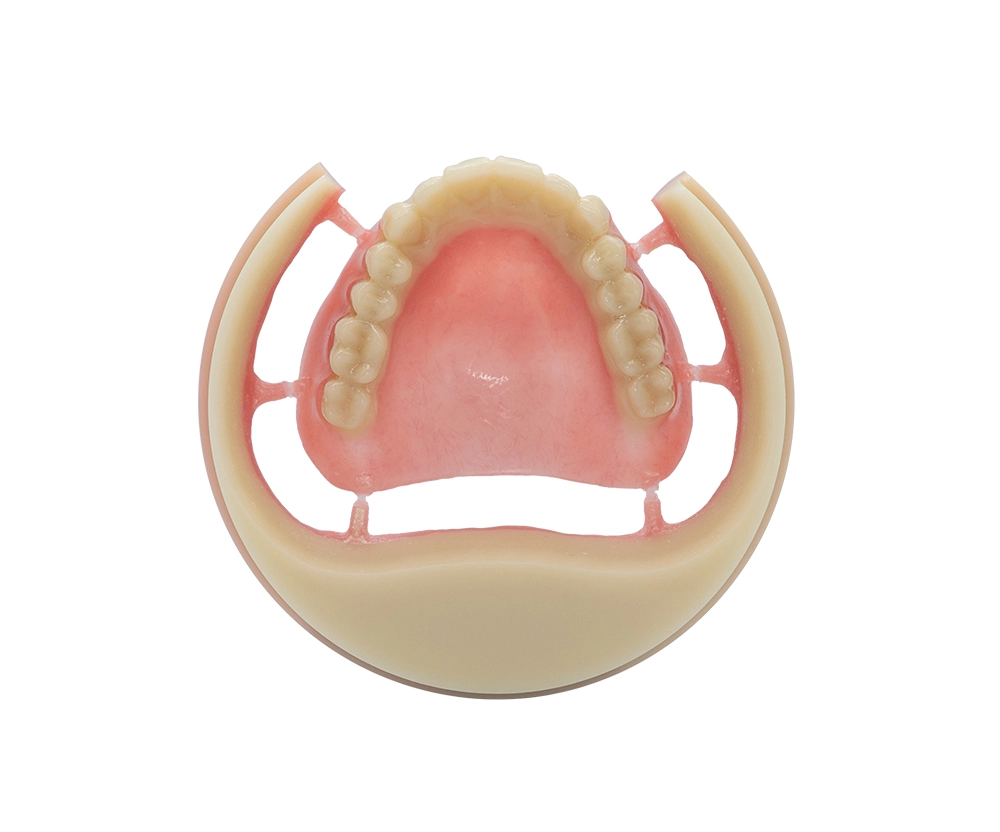Zirconia block vs. traditional all-ceramic material: 5 clinical evidence advantages analysis
2025-05-27
According to the Ten-Year Development Report on Fixed Prosthetics in China published by the Digital Center of Peking University Stomatology Hospital 2024, the use of zirconia material jumped from 29.1% in 2014 to 67.8% in 2023. Behind this shift are five major technological breakthroughs that have been clinically validated over 15 years.
1. Mechanical properties: from the lab to the ultimate challenge of occlusal force
Core data
Flexural strength: Y-TZP zirconia reaches 1200-1400 MPa, 3.5 times higher than lithium disilicate glass-ceramics (340 MPa) (Journal of Prosthetic Dentistry 2020)
Fracture toughness Zirconia 7.5 MPa-m¹/², 6 times higher than feldspathic ceramics (1.2 MPa-m¹/²) (ISO 6872:2022 test standard)
Clinical validation
Seoul National University Hospital, Korea, 2023 Study: zirconia full crowns in posterior region 5 years Fracture rate of only 0.7% vs. up to 5.3% for hot die cast porcelain (n=1420 cases)
2.Biocompatibility: Clinical evidence beyond conventional knowledge
Microscopic mechanisms
Scanning electron microscopy shows: zirconia surface grain size of 0.3-0.5μm, significantly smaller than glass ceramics of 2-3μm (Dental Materials 2021)
Plaque adhesion test: zirconia surface bacterial adherence is 42% less than that of feldspathic ceramics (FDA 510(k) K193102 certification document)
Clinical control Guangdong Provincial Dental Hospital 2023 Clinical study: incidence of marginal microleakage in zirconia restorations 1.8%, significantly lower than 6.9% in glass ceramics (P<0.01)
3. Aesthetic revolution: the leap from monochrome to bionic
Technical breakthroughs
Multi-layer gradient technology: new generation zirconia (e.g. Katana STML) realizes 0.5mm gradient transition from dentin layer (A2) to incisal end (A1)
Optimization of transmittance: high-transmittance zirconia (HT) transmittance has been increased to 45%, which is close to 48% of natural enamel. The light transmission rate of high-transmission zirconia (HT) has been increased to 45%, which is close to 48% of natural tooth enamel (VITA 3D-Master Technology White Paper)
case demonstration
4.The efficiency revolution of digital workflow
Comparison of processing parameters
| Item | Zirconia cutting | Thermal compression casting |
| Single crown time consumption | 38±5min | 115±15min |
| Edge accuracy | 49±8μm | 82±12μm |
Clinical value
Wuhan University Stomatological Hospital Measurement: zirconia restorations from scanning to Dental wear average cycle time shortened to 3.2 days (conventional process takes 7.5 days)
V. Full Life Cycle Economics Evaluation
10-year cost modeling
Zirconia restorations: initial cost ¥3200, cumulative maintenance cost ¥480
Glass ceramic restorations: initial cost ¥2500, cumulative maintenance cost ¥2100
(Calculation model from the Chinese Journal of Stomatology 2024 cost-benefit analysis)
Comparison of maintenance rate
[10-year follow-up data] zirconia 6.2% vs. 18.7% for glass ceramic
References
ISO 6872:2022 Dental ceramic
Zhang et al. J Prosthodont Res 2023;67:215-223
Clinical Practice Guidelines for All-Ceramic Restorations Chinese Dental Association 2025 Edition




